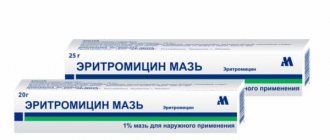About the disease
Acute respiratory viral infection (ARVI) is a large group of pathologies of the upper and middle respiratory tract, which are provoked by pathogenic microorganisms (viruses).
Scientists have identified approximately 200 pathogens that can cause typical clinical signs. This creates difficulties when it comes to accurately verifying the strain of the virus that caused the child’s illness. According to domestic and foreign experts, 3-4 episodes of ARVI per year are the norm for a child. The Americans even make a clarification. They allow an increase in the number of ARVI episodes up to 12 times per year if the child starts going to kindergarten or school. Experts attribute this to a sharp increase in new “acquaintances” with viruses that the baby had not previously been in contact with. Therefore, it is important to understand that you do not always need to panic when the first snot appears in a 3-year-old child who has not been sick before, if he has begun to actively communicate with peers.
Doctors more often use the term “acute respiratory disease (ARI)” than ARVI. This is due to the fact that in order to mention the viral genesis of the disease, this fact must be confirmed in the laboratory. This is often time-consuming and financially disadvantageous for the patient. Therefore, it is easier to indicate the broader term acute respiratory infections, which includes not only bacterial infections, but also viral ones (ARVI). Diagnosis and treatment of children in both cases is carried out according to the same algorithm, which eliminates the risk of reducing the effectiveness of therapy.
How to treat ARVI in children?
The first thing to do if you suspect an acute respiratory viral infection is to contact your local pediatrician. The doctor will examine the child, collect anamnesis, evaluate the picture of the disease, and from among the many treatment regimens for ARVI in infants, he will suggest the most effective one for your child.
Antiviral agents and immunomodulators are widely available in pharmacies today. When purchasing, be sure to pay attention to the dosage. It is selected by the attending physician taking into account the age and weight of the child. It is especially important to carefully purchase medications for the youngest children - children from birth to three years. Leading pediatricians usually recommend Derinat for such babies. This drug:
- approved for use in infants from the first day of life,
- combines several properties necessary for the proper treatment of ARVI in children - reparative, antiviral and immunomodulatory.
Remember that strengthening the defenses of a growing body is the basis for fighting any infection! Read more about the drug Derinat on our website.
ARVI symptoms
ARVI is one of the most common pathologies encountered by both children and adults. Every person in the world has encountered this infection at least once in their life. The most typical clinical signs of ARVI in children are:
- increased secretion of mucus from the nose (sometimes it can acquire a yellowish or even greenish tint);
- redness of the sclera;
- tearfulness;
- cough (in the early stages of the disease it is dry, but then becomes productive with coughing up sputum);
- increased body temperature (usual seasonal acute respiratory viral infections are rarely accompanied by a fever of more than 38.5 ° C, however, even such an increase in body temperature can be dangerous for infants and newborns);
- nasal congestion;
- hoarseness of voice.
ARVI should be distinguished from influenza.
The latter is not accompanied by copious nasal discharge, but occurs against the background of severe fever (up to 40°C) and body aches. Most of these symptoms in the early stages are not critically dangerous. But if they are identified, it is worth showing the child to a pediatrician or family doctor to prescribe adequate treatment and prevent the development of serious complications (sinusitis, otitis media, pneumonia).
ARVI in children
The severity of the clinical picture of ARVI in children is determined by the severity of the general toxic syndrome and catarrhal phenomena. You can read about the characteristics of influenza in children here.
Parainfluenza in children
Parainfluenza has an incubation period of about 2-4 days; characterized by an acute onset, moderate fever, mild intoxication and catarrhal inflammation. The child is bothered by hoarseness of voice, pain in the throat and behind the sternum, persistent dry and rough cough, runny nose with mucopurulent discharge. On the 2-3 day of ARVI, the temperature rises to 38-38.5ºC. In children 2-5 years of age, parainfluenza often manifests itself as the sudden development of false croup - acute stenosis of the larynx with a “barking” cough, wheezing voice and noisy breathing. At an early age, obstructive bronchitis may develop. The duration of the uncomplicated form of ARVI caused by the parainfluenza virus in children is no more than 1-1.5 weeks.
Adenovirus infection in children
Adenoviral infection in children has a long, often wavy course. The acute onset of ARVI in children is manifested by chills, fever, headache, lethargy, moderate nasal congestion, severe cough and runny nose with a profuse exudative component (serous, serous-purulent).
The course of ARVI in children is often accompanied by a sore throat and symptoms of pharyngitis, tonsillitis with swelling of the tonsils and fibrinous deposits, as well as conjunctivitis with profuse lacrimation, pain in the eyeballs; enlargement and tenderness of the submandibular and cervical lymph nodes. With adenovirus infection, complications such as pneumonia, otitis media, purulent sinusitis, and kidney damage are possible.
Respiratory syncytial infection in children
The duration of the incubation period of RS viral infection is from 3 to 7 days, clinical manifestations depend on the age of the child. In older children, MS infection usually occurs mildly, like acute catarrh of the upper respiratory tract, without significant intoxication, sometimes with an increase in temperature to subfebrile levels. There is a dry cough, chest pain, and scanty nasal discharge.
In young children with ARVI, symptoms of damage to the lower respiratory tract (bronchiolitis with broncho-obstructive syndrome) appear: paroxysmal obsessive cough with the release of thick, viscous sputum, frequent, noisy breathing with expiratory shortness of breath. The child has a decrease in appetite, sleep disturbances, pale skin, and cyanosis of the nasolabial triangle.
The duration of ARVI in children in most cases is at least 10-12 days, sometimes a protracted recurrent course is possible. Complications of MS infection are associated with the addition of a bacterial infection and the development of otitis media, sinusitis, and pneumonia (especially in newborns and premature infants).
Rhinovirus infection in children
Rhinovirus infection in children begins with general malaise, sometimes with low-grade fever; accompanied by severe nasal congestion with sneezing and copious watery-serous discharge (rhinorrhea), sore throat, and dry cough. Due to constant discharge, the child experiences maceration of the skin around the nasal passages. Herpetic rashes on the lips and vestibule of the nose, profuse lacrimation, loss of smell and taste are possible. There are practically no complications.
Causes of ARVI
The cause of ARVI development is viruses.
When they enter the mucous membrane of the upper respiratory tract, pathogens penetrate the cells and disrupt their normal function. This process is accompanied by local inflammation with hyperproduction of mucus, which leads to a runny nose or cough. Factors that increase the risk of infection are:
- child hypothermia;
- too dry air (under conditions of hyperthermia, the protective function of the mucous membrane of the upper respiratory tract decreases and, accordingly, the aggressiveness of pathogens increases);
- congenital or acquired immunodeficiency;
- malnutrition, prematurity;
- abnormalities of the upper respiratory tract;
- exacerbation of chronic somatic diseases.
The source of infection is a sick person. Viruses are transmitted by airborne droplets and through contaminated personal hygiene items.
How to treat a baby under one year old?
All parents dream of their children not getting sick. But not all babies have good immunity - many suffer from diseases quite seriously. How to properly treat ARVI in children? What can you do to help your baby recover faster, easier and prevent the development of complications?
The most important thing is to let your baby drink plenty of liquid in small portions, preferably a teaspoon, as often as possible. It is best to use simply boiled water for drinking. Children over 6 months old can be offered infusions of chamomile and rose hips, dried fruit compote and berry fruit drinks. The best thing for a baby during this period is breast milk. Due to the content of immunoglobulins, it helps in the fight against infections.
At elevated temperatures, you cannot bathe your child or walk with him, but you must regularly ventilate the room. If your baby has a fever or the temperature has risen above 38 degrees, give him an antipyretic in the dosage recommended by the doctor. When vomiting, you should give preference not to emulsions, but to rectal suppositories. For indigestion and diarrhea, the opposite is true.
Be careful - ARVIs are transmitted by airborne droplets and are especially dangerous in the cold season. Just a few seconds of contact with a sick person is enough to become infected. The main weapon against viral infections is a strong immune system, which helps ensure regular use of the drug Derinat.
Diagnosis of ARVI
The SM-Doctor clinic is an advanced medical institution that operates according to the standards used in leading medical centers in Europe and the world.
This means that the child undergoes only informative examinations and receives treatment that has proven its effectiveness. The diagnosis is based primarily on an assessment of the patient's clinical condition. The doctor analyzes the complaints of the child and his parents, clarifies the medical history, and conducts a physical examination with auscultation of the lungs. To confirm the diagnosis, the pediatrician may also use the following examinations:
- chest x-ray;
- a set of laboratory tests to assess the patient’s general health (blood and urine tests, blood biochemistry);
- microscopic analysis of nasal mucus or sputum.
If necessary, the doctor can additionally refer the baby for a consultation with related specialists (cardiologist, gastroenterologist, pulmonologist).
Treatment of ARVI
ARVI, which occurs without complications, is not a serious problem for an experienced doctor. According to modern recommendations, the following key aspects can be identified in the treatment of seasonal colds:
- Bed rest. Peace for a child is a hall for the rapid restoration of lost strength.
- Drink plenty of fluids. Preference should be given to breast milk (children under 1-2 years old), warm tea, and fruit drinks. The liquid helps remove toxins from the child’s body.
- Complete nutrition. A sufficient supply of protein, vitamins and minerals promotes rapid recovery and complete tissue restoration.
- Taking antipyretic medications (paracetamol, ibuprofen) when body temperature rises above 38.5°C.
If complications develop, the doctor may additionally prescribe antibiotics, vasoconstrictors, and antihistamines.
It all depends on the characteristics of a particular clinical case. “SM-Doctor” is a clinic where pediatricians with over 10 years of experience effectively treat children with any form of ARVI. Our specialists have their own laboratory and access to modern equipment. All this guarantees the highest quality of services provided and improvement of the patient’s well-being in a short time. Contact qualified specialists!








